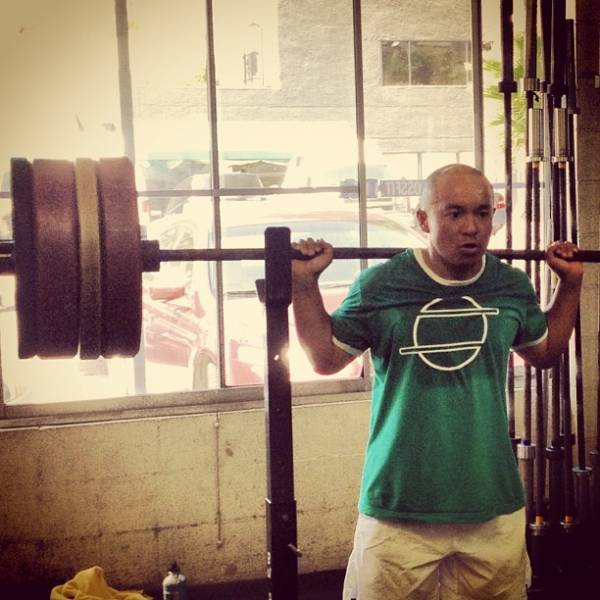While out for dinner with some friends recently, all of them formidable masters athletes, one of them mentioned that she had seen a fellow athlete post on Facebook about his “lifetime max” recently. “What a stupid thing to write” she said. “Of course a max is a lifetime max!”
These friends I was with are people who have been training for a lifetime longer than mine, yet still the only maxes that made sense to them were lifts that were better than anything they had ever lifted in their whole lives. I couldn’t help thinking they were missing a trick, though. But who was I to disagree? That’s not to say I didn’t try. Here’s a tip: never attempt to have this type of discussion with a group of masters athletes who have collected years of athletic involvement that total more than your total. Particularly while out to dinner with wine and conversation passing the lips in equal measure.
To me, a lifetime max is definitely something worthy of a drink. But is it really a stupid thing to say? Or is it a good way of differentiating between maxes? The best way to answer this question is to work out what we mean by a lifetime max, and how it might differ from other types of max. And it’s impossible to talk about this topic without referring to Dan John’s excellent article The Philosophy of Physical Capital, about the different types of maxes. If you’ve never read it, take a look. The article you are reading now dovetails in with Dan’s piece.
Here is my breakdown of the types of maxes we all encounter throughout our strength journey, and how to make sense of them:
Day Max
I’ve named all of these maxes in ways that are self-descriptive. So the Day Max is the max lift you can hit on that day. However, this is not the same as when you work up to something heavy, without any misses. That is called a heavy single. A max for the day is genuinely the heaviest weight you can lift on that day, or as close as possible to it. A general rule of thumb is to give yourself three attempts at a given weight. If you miss three attempts, you are done, and your max is deemed as your last successful lift.
Coaches: The difference between a “max for the day” and a “heavy single” is also an important distinction for you to make in your programming. Be clear on which one you want, and which one you ask for.
Technical Max
 This is the max weight you can hit with perfect technique, or at least without any major deviation. This max is often only slightly lower than your training max (more on what that is in a minute). As you become more advanced, your technical max and your training max should edge ever closer. Many lifters do not give much thought to their technical max, instead placing all of the focus on maxes involving bigger numbers. However, on a day-to-day training basis, this is the most important max to improve on in terms of long-term strength development.
This is the max weight you can hit with perfect technique, or at least without any major deviation. This max is often only slightly lower than your training max (more on what that is in a minute). As you become more advanced, your technical max and your training max should edge ever closer. Many lifters do not give much thought to their technical max, instead placing all of the focus on maxes involving bigger numbers. However, on a day-to-day training basis, this is the most important max to improve on in terms of long-term strength development.
Your technical max is also ideal to use when plugging your max figure into a new training program. A max reliant on good technique scales up well. One reliant on a combination of luck, brute force, and adrenaline is less of a useful marker when it comes to percentages and programs. Work out what your technical max is, and seek to improve it.
Training Cycle Max
This max is likely to be something you have built up to over the course of a few weeks and months, or are in the process of doing so. Your training cycle max is relevant to the here and now. It’s in accordance with your strength, nutrition, recovery, and lifestyle factors at this particular time. If it’s at the end of your training cycle, this max may also be the result of some specific rep schemes and tapering. This makes it a meaningful marker for comparing against yourself throughout your training cycle. And for the same reasons, a little less meaningful to carry over anywhere else beyond this (except, perhaps, for comparisons of training cycles).
Training Max
 Your training max is simply the most you have ever lifted in training. Often, it will be on a day where everything happened to come together. It may not be the prettiest of lifts, and it may or may not have been to competition standards, but it happened, somehow. This one is a good marker to compare with other maxes you hit in training, throughout any and all training cycles, but maybe not much else. Many lifters use this max to as their working max for new programs. Make no mistake, this is a mistake. It’s not scalable either down in terms of percentages or up in terms of a solid base number.
Your training max is simply the most you have ever lifted in training. Often, it will be on a day where everything happened to come together. It may not be the prettiest of lifts, and it may or may not have been to competition standards, but it happened, somehow. This one is a good marker to compare with other maxes you hit in training, throughout any and all training cycles, but maybe not much else. Many lifters use this max to as their working max for new programs. Make no mistake, this is a mistake. It’s not scalable either down in terms of percentages or up in terms of a solid base number.
Competition Max
This is the highest number you’ve hit in competition. This is actually your first legitimate max. There’s a big difference between hitting this number in the weight room and hitting it on the platform, under the scrupulous eyes of multiple judges. To attain a good and true competition max, it should have taken the work of a good training cycle to get you ready for the comp. You should look to set a new competition max every single time you step out onto the platform.
Lifetime Max
I was tempted to combine this with competition max, for three reasons: Firstly, any max that is to be deemed your lifetime max should be done under strict competition standards. Secondly, the extra buzz a competition gives youshould help you in your mission to hit an all-time max. Lastly, the fact that you hit it in a competition suggests you have been strategically and progressively working towards this lift for a good while.
 That last reason is an important part of a lifetime max. It should be the culmination of a long period of intense training and focused hard work, leading up to this competition in particular. This will have been over months or even years (think in terms of the Olympics.) However, here’s the distinction between competition and lifetime max. If your competition max has not been attained though this level of commitment, it is not your true lifetime max. It’s merely your competition max. Obviously (hopefully), you have put some effort into your competition preparation, but there is a difference between the two types of max. Dan John refers to a similar concept as the difference between your “max max” and your “max max max.”
That last reason is an important part of a lifetime max. It should be the culmination of a long period of intense training and focused hard work, leading up to this competition in particular. This will have been over months or even years (think in terms of the Olympics.) However, here’s the distinction between competition and lifetime max. If your competition max has not been attained though this level of commitment, it is not your true lifetime max. It’s merely your competition max. Obviously (hopefully), you have put some effort into your competition preparation, but there is a difference between the two types of max. Dan John refers to a similar concept as the difference between your “max max” and your “max max max.”
Also, your lifetime max may be something that has taken so much preparation and dedication that you are unlikely to ever lift it again. Again, we can take the example of an Olympic athlete here. Having peaked at his or her last Olympics, maybe having even broken a record, does it mean that he or she will never top that peak? Probably. Does it mean that this high-level athlete cannot continue to train in the sport with meaningful markers and maxes? That would be a sad day – and provides an example of why it’s important to have and know max markers across the spectrum, from your day max to your lifetime max.
I hope you’ll agree that this framework is a useful way of breaking down the wonderful world of maxes. It is purposefully made simple. But unless you’re still living at home letting your mommy do your washing, life ain’t always that simple. There are times when these maxes will be combined, switched around, or turned upside down. And that’s okay.
Where does this discussion leave us? And how can you plug these concepts back into your training?
The good news is, breaking down your maxes like this means you’re going to be hitting personal records a lot more often. Well, actually, that’s not true. You’ll be hitting them just as often. But you’ll now realize they are legitimate maxes. Grab your training log, open it to the back page, and work out what each of these maxes are for your important lifts. This record will give you more points of reference, more markers of progress, and more to be happy about.
I also hope it’s now clearer to see why the guy on Facebook was so happy about his lifetime max. And I hope my dear masters friends are reading this. Perhaps a lifetime max isn’t such a stupid thing to write after all.
Photo 1-3 provided by CrossFit LA.
Photo 4 courtesy of Becca Borawski.






